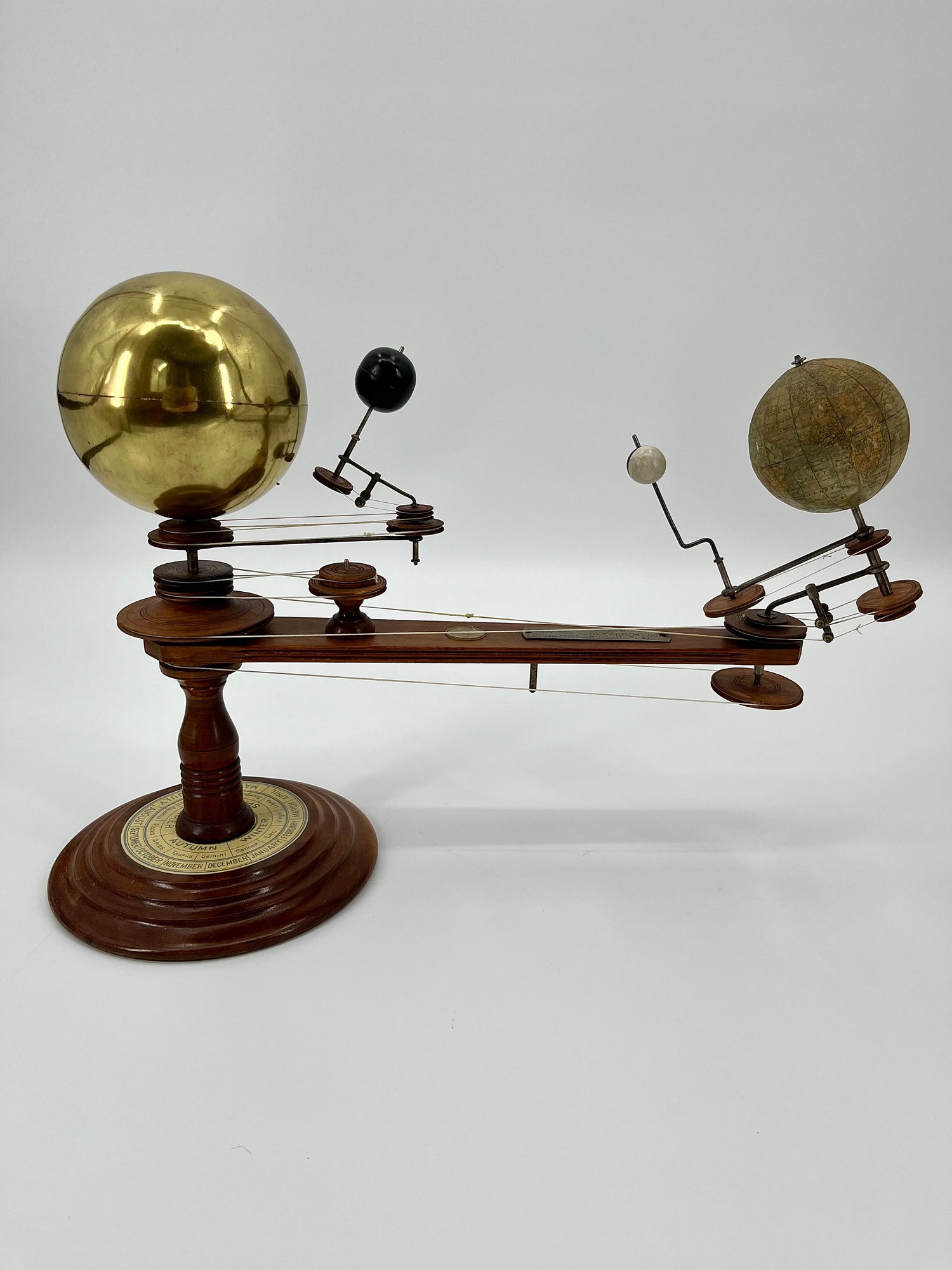Alexander Laing Tellurians
A fine pair of early, professionally restored & functional tellurians by Laing Planetarium Co.
First invented to accurately demonstrate Earth's movement about the Sun & the Moon's movement about Earth. Easily demonstrating seasonal affects, eclipses, and equinox/solstices; These tellurians show the Suns' relative position in celestial sphere; demonstrating the sun relative to the zodiac.
Operated by turning the handle Alexander Laing used turned maple pulleys & string; Depending on the gear-train, tellurians were strung with silk button thread, crochet silk, and silk fishing line. Both professionally restrung, with appropriate silk line & recommended knots.
Both tellurians above also feature Venus' celestial movement about the Sun. The gear-train driving Venus is complex, with a pully system that keeps retrograde rotation (Venus spins clock-wise, all other planets in our solar system spin counter-clockwise). On both models, Venus is painted black (later models show Venus half black & white).

Late 19th Century
Early Alexander Laing Tellurian
Gold painted wooden sun (indicative of very early models, later models featured polished spun-brass spheres for the sun). Maple standard, base arm, and planetary arm (later planetary arms were made of metal rods). Nickel-plated steel wire. Metal lithographed compass card. Professioinally restrung.
Featured in The Library of Congress.

Early 20th Century
Rare 1905 Laing's Tellurian
A prime example of Laing's Planetarium. Features a polished, spun-brass hollow sun. Maple base, standard, pulleys, and planet arm. A metal pin-under planet arm is spun to operate the tellurian. This Laing features a compass; used to align the device so that Earth's North Pole is accurately aligned with North. Once aligned, and rotated to accurate position on calendar dial; one can see their current celestial position.




